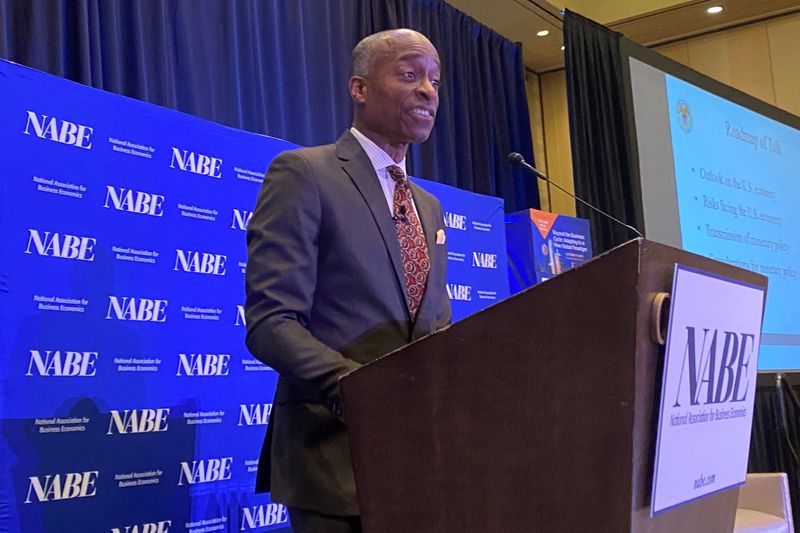Fed’s Jefferson sees progress on inflation, says rate cuts linked to broad set of data
© Reuters. Federal Reserve Vice Chair Philip Jefferson speaks at a conference of the National Association for Business Economics in Dallas, Texas, U.S., October 9, 2023. REUTERS/Ann Saphir/File Photo By Howard Schneider
WASHINGTON (Reuters) -Federal Reserve Vice Chair Philip Jefferson said on Thursday he will be looking across a broad set of economic indicators to convince him it is time to cut interest rates, but gave no indication when that first cut might come.
“I’m not just looking at one indicator to indicate whether or not that’s the time to start,” Jefferson said in a presentation to the Peterson Institute for International Economics. “I think there would have to be a body of evidence about macroeconomic performance that would then weigh in the direction of okay, now is the time.”
“I am looking at the totality of the data in the economy,” he said. “Labor markets, growth, productivity on the real side and inflation on the price side. I don’t think it’s necessarily one thing that we would have to see before we think about cutting. I think we want to see evidence that inflation is sustainably at or going toward our target level.”
In his prepared remarks and a question-and-answer session, Jefferson did not indicate when he thought the Fed’s policy easing might begin, a question that investors and analysts are eager to have answered.
The Fed held its benchmark overnight interest rate steady in the 5.25%-5.50% range at its policy meeting last month, and minutes of that session showed broad consensus that more evidence of falling inflation is needed before it can be lowered.
Data since the Fed’s Jan. 30-31 meeting, including stronger-than-expected job growth and consumer inflation, has pushed back expectations that the Fed could lower rates as soon as its March 19-20 meeting, with investors now anticipating an initial reduction at the central bank’s June 11-12 meeting.
Fed Governors Lisa Cook and Christopher Waller are due to speak later on Thursday.
RISKS TO OUTLOOK
Jefferson said he remained “cautiously optimistic” about the U.S. central bank’s progress in bringing inflation back to its 2% target despite the recent strong job and consumer price data.
Fed staff estimates, he said, show the central bank’s preferred measure of inflation, the personal consumption expenditures price index, rose 2.4% over the 12 months through January, down from 2.6% in the prior month, with prices stripped of volatile food and energy costs increasing 2.8% versus 3%.
The actual data will be released next week, but Jefferson said the staff estimates indicate that a “pronounced” drop in inflation continues.
“I remain cautiously optimistic about our progress on inflation,” Jefferson said. “If the economy evolves broadly as expected, it will likely be appropriate to begin dialing back our policy restraint later this year.”
Jefferson, still early in his tenure as the Fed’s top policy spokesperson, said risks to his outlook might come from strong consumer spending that “could cause progress on inflation to stall,” weakening job growth that might warrant earlier rate cuts, and outside shocks that might push up prices.
He did not, however, lean into any of those risks as his base case, or indicate when he thinks the Fed might find the confidence it needs to begin cutting rates.
Jefferson instead devoted much of his talk to reviews of past monetary easing cycles, including a mid-1990s episode when the Fed cut rates in response to easing inflation – rather than an economic weakening – that might be the best parallel to the current situation.










 Bitcoin
Bitcoin  Ethereum
Ethereum  Tether
Tether  XRP
XRP  USDC
USDC  Wrapped SOL
Wrapped SOL  Lido Staked Ether
Lido Staked Ether  TRON
TRON  Dogecoin
Dogecoin